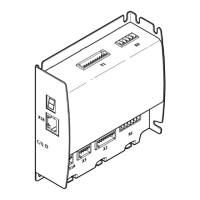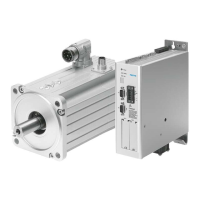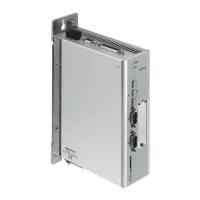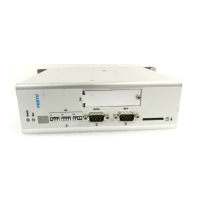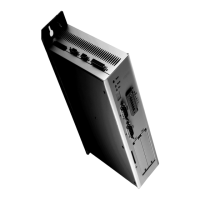Do you have a question about the Festo CMMO-ST and is the answer not in the manual?
Covers essential safety guidelines, warnings, and precautions for operating the device safely.
Specifies the intended application, scope, and conditions for the CMMO-ST controller.
Details technical requirements, personnel qualifications, and applicable regulations for proper product use.
Illustrates the overall system architecture and component connections for the CMMO-ST.
Outlines key features, commissioning options, and I/O interface profiles of the CMMO-ST.
Explains the different operating modes: positioning, speed, and force control.
Details essential drive functions such as Jogging, Teach, Standstill monitoring, and Brake.
Provides safety precautions and general guidance for mounting the CMMO-ST controller.
Presents the physical dimensions and mounting options for the controller unit.
Covers general safety, EMC, and cable management for electrical installation.
Details power supply, reference switch, STO, encoder, and motor connections.
Highlights critical safety regulations and warnings applicable during the commissioning process.
Guides through network settings, DHCP, and initial start-up via Ethernet connection.
Explains parameter file management, homing, jogging, and I/O status via web server.
Details the installation and initial steps for parameterizing and commissioning with FCT.
Classifies malfunctions into Error, Warning, and Information with severity levels.
Explains how the 7-segment display shows operating modes, errors, and warnings.
Covers reading, deleting, and managing the diagnostic memory via FCT and website.
Provides a comprehensive table of error messages, their causes, and suggested remedies.
Lists general technical specifications including environmental, EMC, and electrical data.
Introduces the CVE protocol, its communication principle, and capabilities.
Explains CVE objects, data types, and the structure of read/write requests.
Details the finite state machine, control/status words for drive management.
Provides definitions for terms and abbreviations used throughout the manual.
Covers essential safety guidelines, warnings, and precautions for operating the device safely.
Specifies the intended application, scope, and conditions for the CMMO-ST controller.
Details technical requirements, personnel qualifications, and applicable regulations for proper product use.
Illustrates the overall system architecture and component connections for the CMMO-ST.
Outlines key features, commissioning options, and I/O interface profiles of the CMMO-ST.
Explains the different operating modes: positioning, speed, and force control.
Details essential drive functions such as Jogging, Teach, Standstill monitoring, and Brake.
Provides safety precautions and general guidance for mounting the CMMO-ST controller.
Presents the physical dimensions and mounting options for the controller unit.
Covers general safety, EMC, and cable management for electrical installation.
Details power supply, reference switch, STO, encoder, and motor connections.
Highlights critical safety regulations and warnings applicable during the commissioning process.
Guides through network settings, DHCP, and initial start-up via Ethernet connection.
Explains parameter file management, homing, jogging, and I/O status via web server.
Details the installation and initial steps for parameterizing and commissioning with FCT.
Classifies malfunctions into Error, Warning, and Information with severity levels.
Explains how the 7-segment display shows operating modes, errors, and warnings.
Covers reading, deleting, and managing the diagnostic memory via FCT and website.
Provides a comprehensive table of error messages, their causes, and suggested remedies.
Lists general technical specifications including environmental, EMC, and electrical data.
Introduces the CVE protocol, its communication principle, and capabilities.
Explains CVE objects, data types, and the structure of read/write requests.
Details the finite state machine, control/status words for drive management.
Provides definitions for terms and abbreviations used throughout the manual.
| Input voltage | 24 V DC |
|---|---|
| Protection class | IP20 |
| Digital inputs | 8 |
| Digital outputs | 4 |
| Analog inputs | 2 |
| Communication interfaces | CANopen |
| Ambient temperature range | 0 to 50 °C |
| Operating voltage range DC | 18 V to 30 V |
| Control mode | Position control Force control Torque control Velocity control |
| Weight | 0.5 kg |


